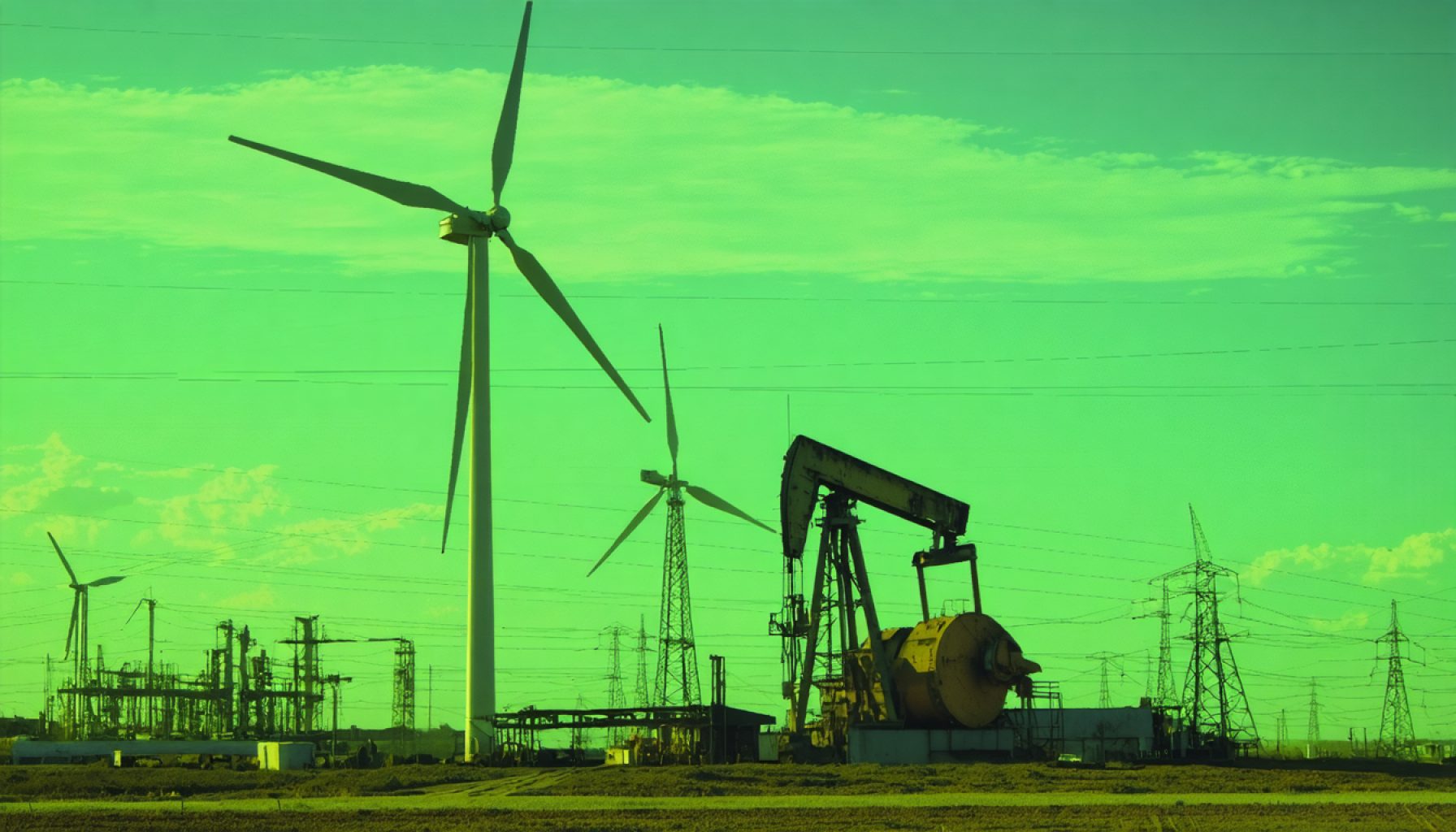- The departure of BP’s Helge Lund complicates the oil and gas industry’s transition towards sustainable energy.
- Lund aimed to reduce BP’s oil and gas production by 40% by 2030, but market volatility and tariff issues challenge these plans.
- Fossil fuels still dominate, making up 80% of global energy production, highlighting strong global reliance.
- Renewable energy growth requires solid national policies, investment, and legislative support for low-carbon alternatives.
- Government actions and private investments are critical to achieving meaningful progress towards a greener future.
- Public engagement and support for companies prioritizing sustainable practices can influence industry directions.
- The global energy sector faces a pivotal moment, where strategic decisions will impact the future of clean energy transition.
The recent seismic shift in the oil and gas industry has sent ripples through the global energy landscape, as the grand ambitions for a greener future encounter unexpected turbulence. With the influential departure of BP’s Helge Lund, one of the main strategists behind the industry’s green transition, the road to sustainable energy appears rockier than ever.
Picture a landscape where the aspirations for clean energy pivot uneasily between ambition and reality. Lund, who steered BP’s bold strategy to cut their oil and gas production by 40% by 2030, has stepped away, just as market dynamics became more unpredictable. This raises the stakes higher for both traditional and renewable energy sectors caught off guard by the tariff inequalities unleashed by the Trump administration. The financial market’s seesaw, impacted by these tariffs, has only fueled volatility, making it increasingly challenging for renewable ventures to secure the needed investment and policy support.
Despite the dawn of an era where BP and Shell had started charting a course away from fossil fuels, committing to their carbon reduction targets, the latest events have prompted a reevaluation. Fossil fuels still account for a staggering 80% of global energy production, a statistic that showcases the deep-rooted dependency the world has yet to break.
The road forward demands clarity and commitment at a national policy level—low-carbon alternatives cannot gain genuine momentum until the financial infrastructures and legislative frameworks support them robustly. This calls not just for reimagined strategies by energy firms but also for a decisive push from government bodies to fill funding voids and erect scaffolds upon which green energy solutions can rise.
For individuals, the choice becomes more crucial—where to place financial faith and what enterprises deserve endorsement. By choosing to back companies that prioritize sustainable practices, consumers and investors alike can collectively nudge the industry towards a future that respects our planet’s boundaries.
This transitional quagmire holds profound implications, reminding us that while ambition fuels innovation, tangible progress will only flourish when aspirations meet steadfast, systemic backing. The energy revolution is teetering at a crossroads, one where public awareness, strategic investments, and policy shifts will determine whether promises fade or fuel a sustainable dawn.
Green Energy Transition: Navigating the Challenges and Opportunities Ahead
The ambitious move towards a greener energy landscape is experiencing turbulence as the global oil and gas industry encounters unforeseen obstacles. The recent departure of BP’s Helge Lund, a pivotal figure in steering the company’s green strategy, underscores the complexities involved in transitioning away from fossil fuels. With fossil fuels still comprising 80% of global energy production, a shift to sustainable energy sources requires more than aspiration; it necessitates strategic investments, policy transformations, and public consciousness.
How-To: Steps to Support Sustainable Energy Initiatives
1. Invest in Renewable Energy Startups: Supporting ventures that innovate in solar, wind, and geothermal technologies can drive progress. Use platforms like crowdfunding to back green projects.
2. Advocate for Policy Change: Engage with local and national representatives to push for legislation that supports renewable energy subsidies and carbon reduction targets.
3. Educate and Influence: Share information on the benefits of renewable energy within your network, encouraging others to support companies committed to sustainability.
Real-World Use Cases
– Corporate Strategies: Companies like Tesla and Orsted are demonstrating successful models by focusing on clean technology and offshore wind energy, respectively.
– Community Initiatives: Cities like Copenhagen and San Diego are investing heavily in local green policies, resulting in significant reductions in carbon emissions.
Market Forecasts & Industry Trends
The renewable energy market is projected to grow significantly, driven by technological advancements and increasing environmental awareness. According to the International Energy Agency (IEA), renewables are expected to account for nearly 95% of the increase in global power capacity through 2025.
Pros & Cons Overview
Pros:
– Environmental Impact: Significant reduction in greenhouse gas emissions.
– Long-term Savings: Lower operational costs compared to fossil fuels.
– Job Creation: Expansion in green sectors can lead to robust job growth.
Cons:
– Initial Costs: High upfront investments required for infrastructure.
– Intermittency Issues: Reliance on weather conditions for solar and wind energy.
– Policy Dependency: Requires continuous legislative support for incentives.
Actionable Recommendations
– Diversify Energy Portfolio: Balance investments between traditional and renewable energy to mitigate market volatility risks.
– Support Green Bonds: These investments finance environmental projects and offer returns while contributing to sustainability goals.
– Promote Energy Efficiency: Implement efficient energy practices in your home or business to reduce consumption and support conservation.
Additional Resources
– International Energy Agency for insights and statistics on global energy policies and trends.
– Forbes for industry analysis and reports on energy markets.
By taking informed actions and supporting strategic policies, individuals, companies, and governments can collaboratively drive the crucial shift to a sustainable energy future, ensuring that aspirations translate into impactful realities.
